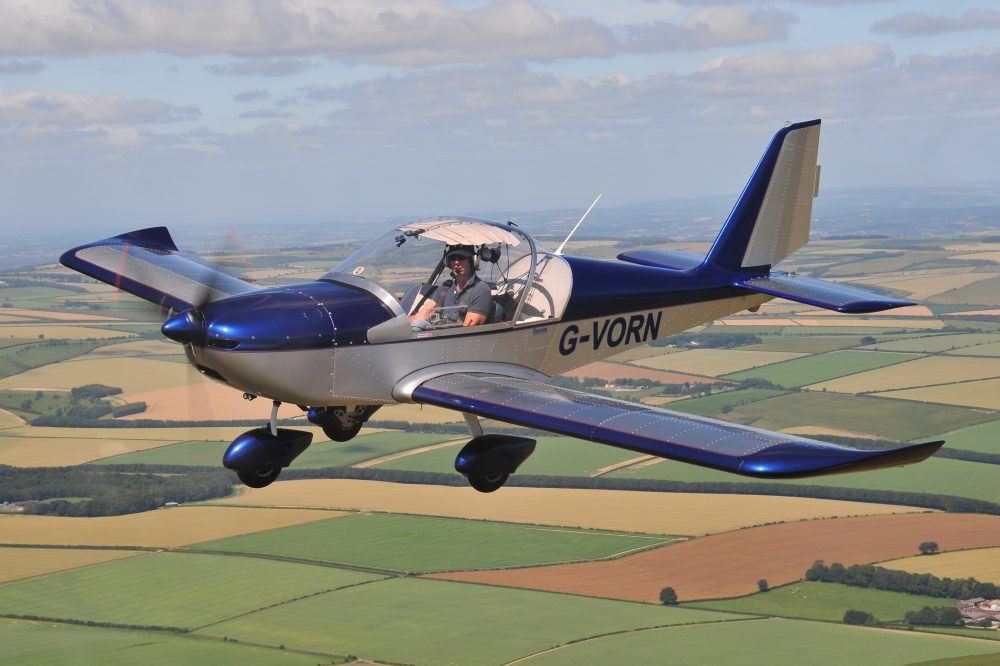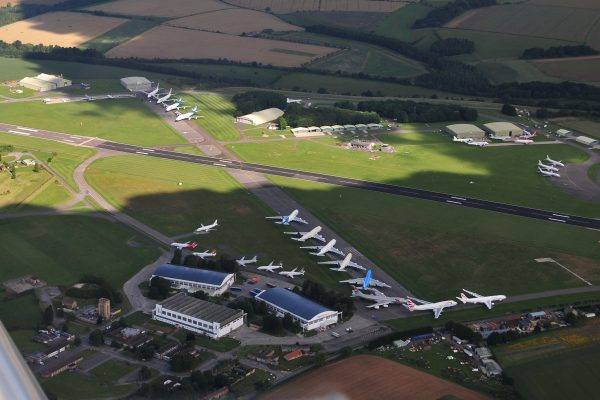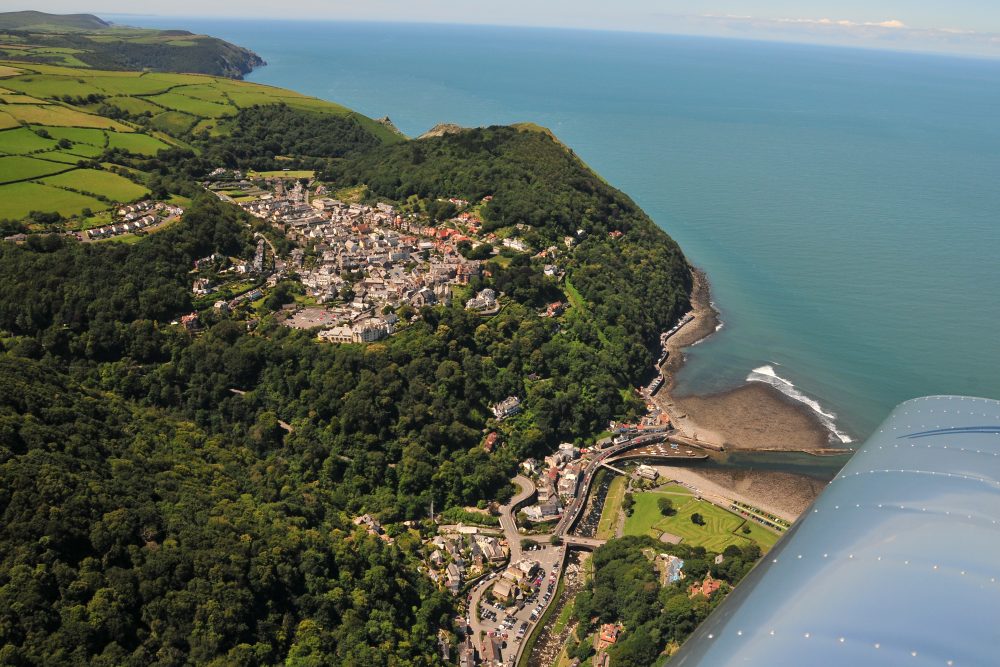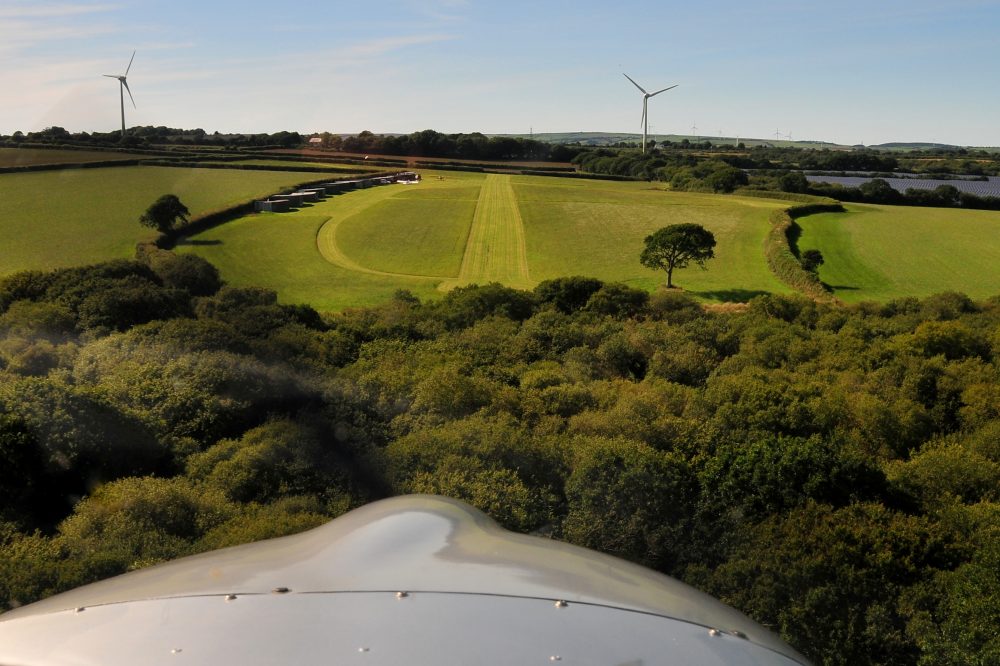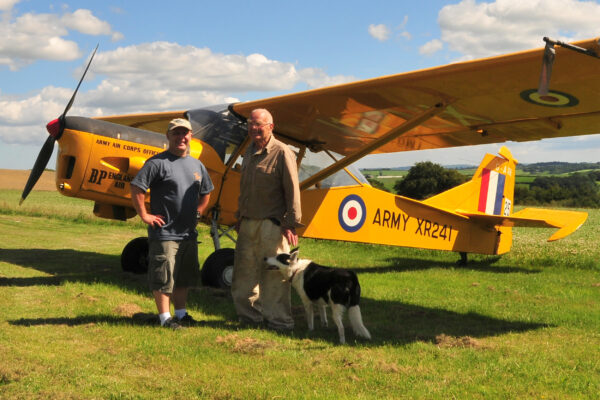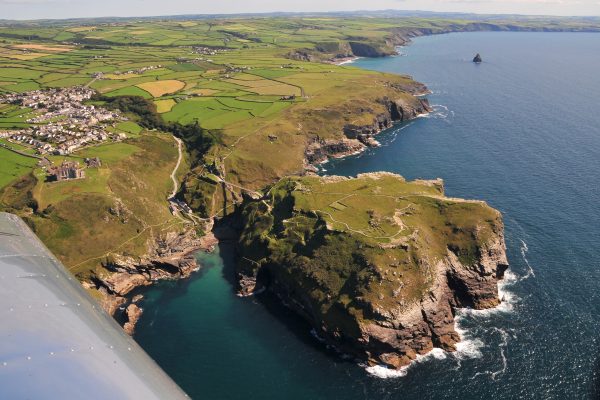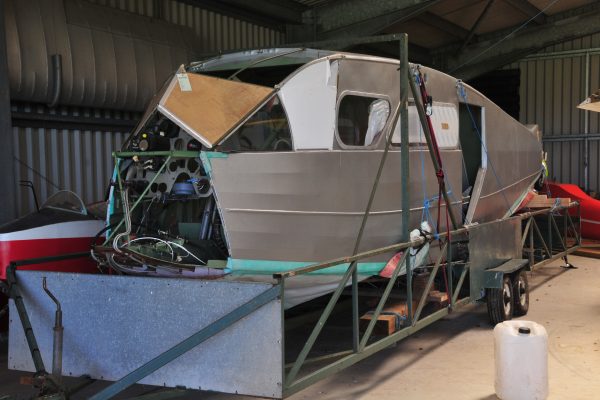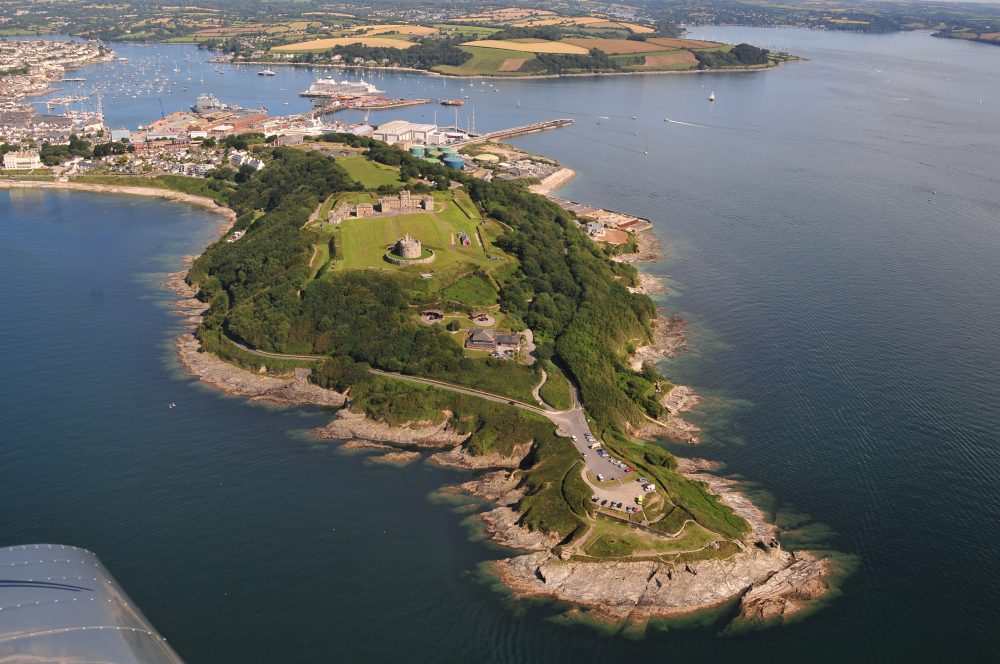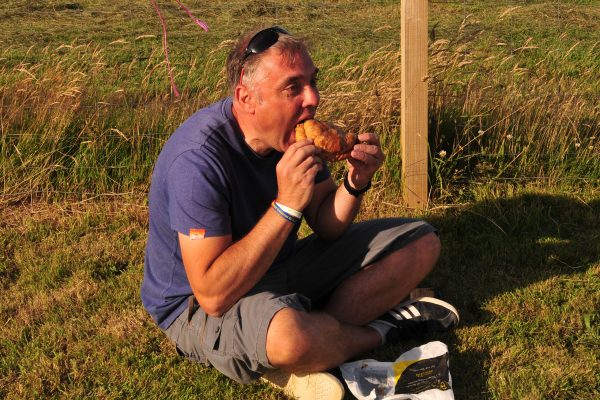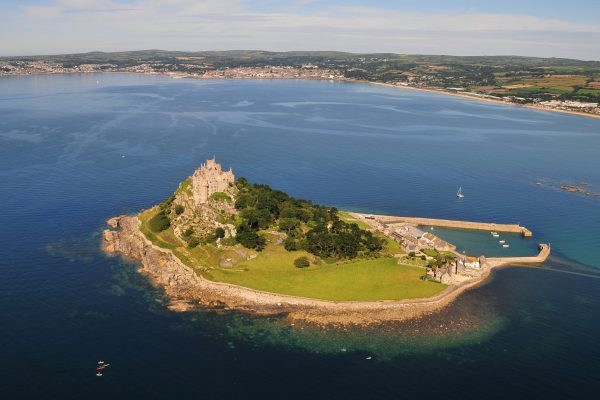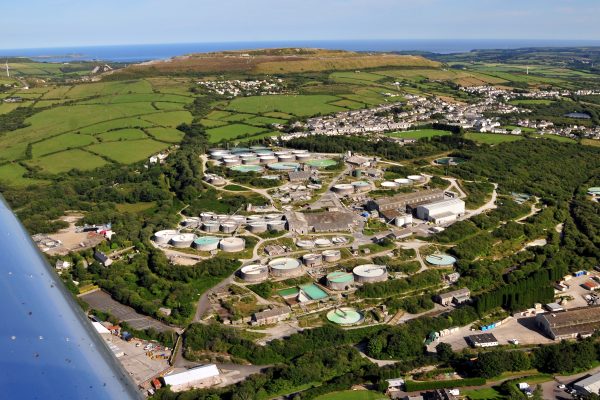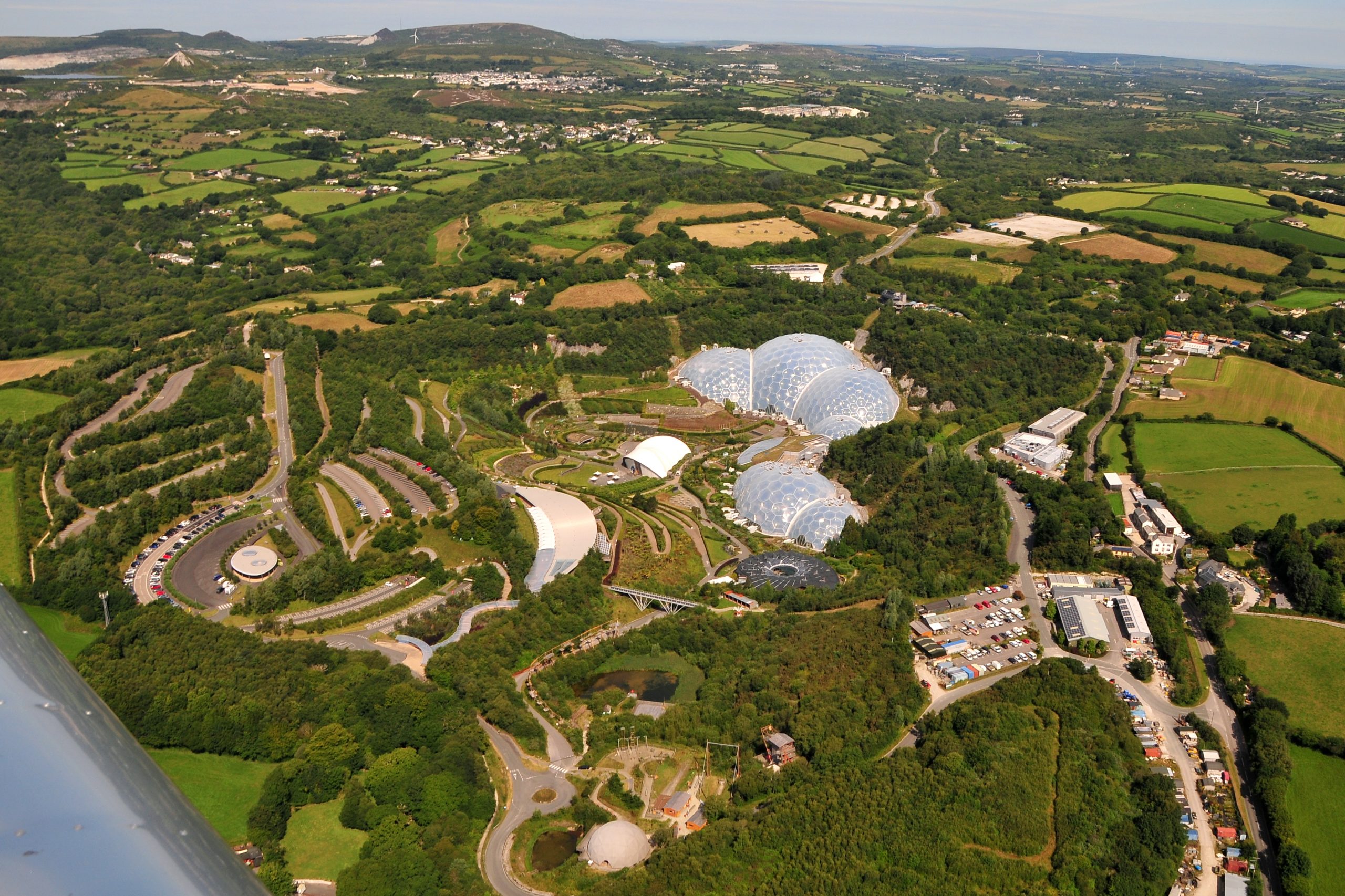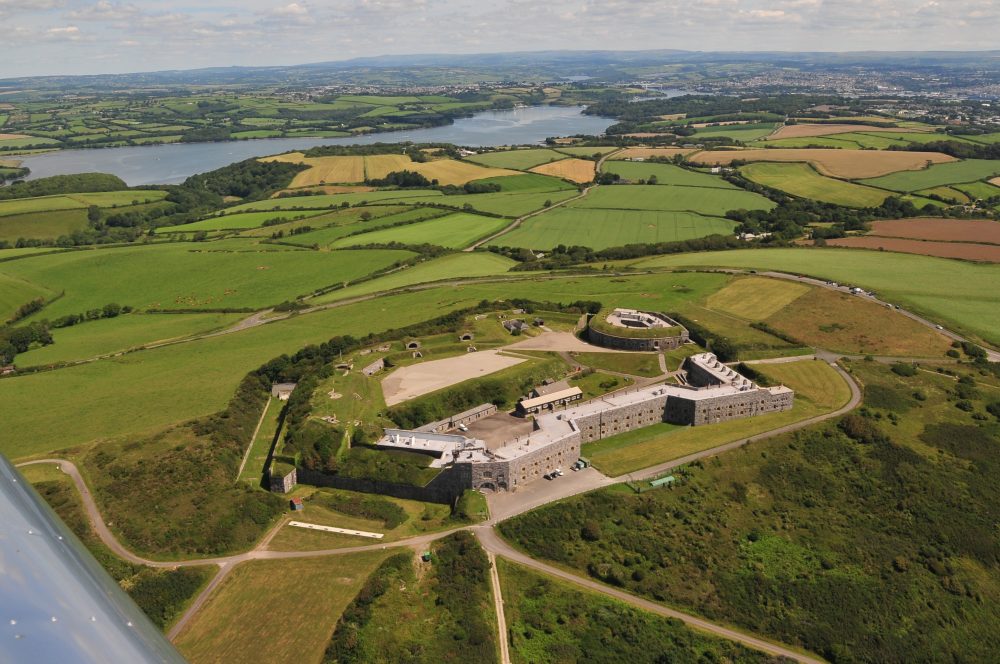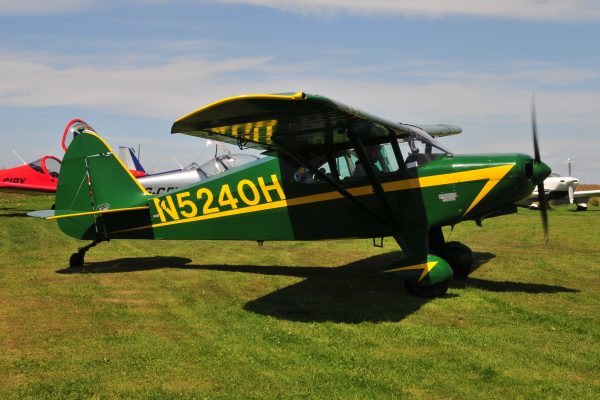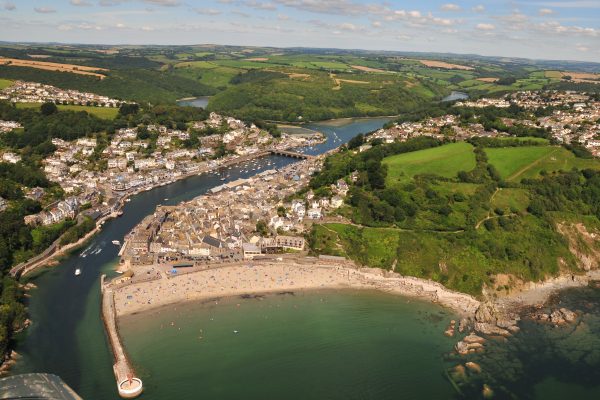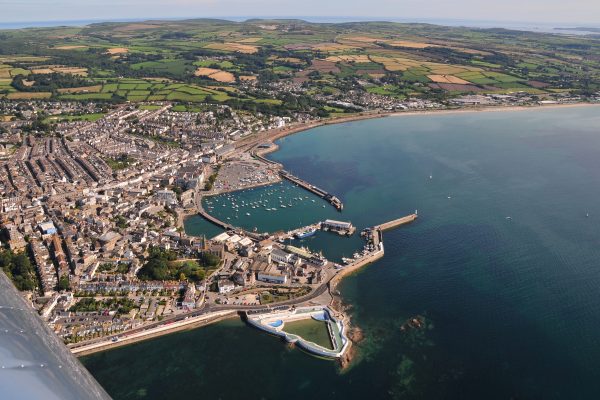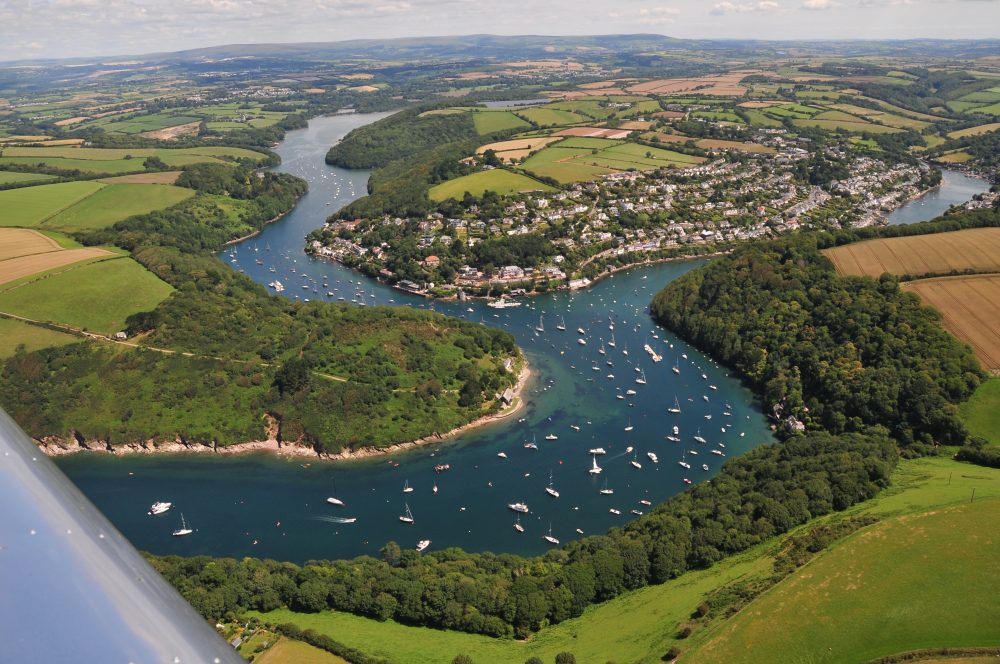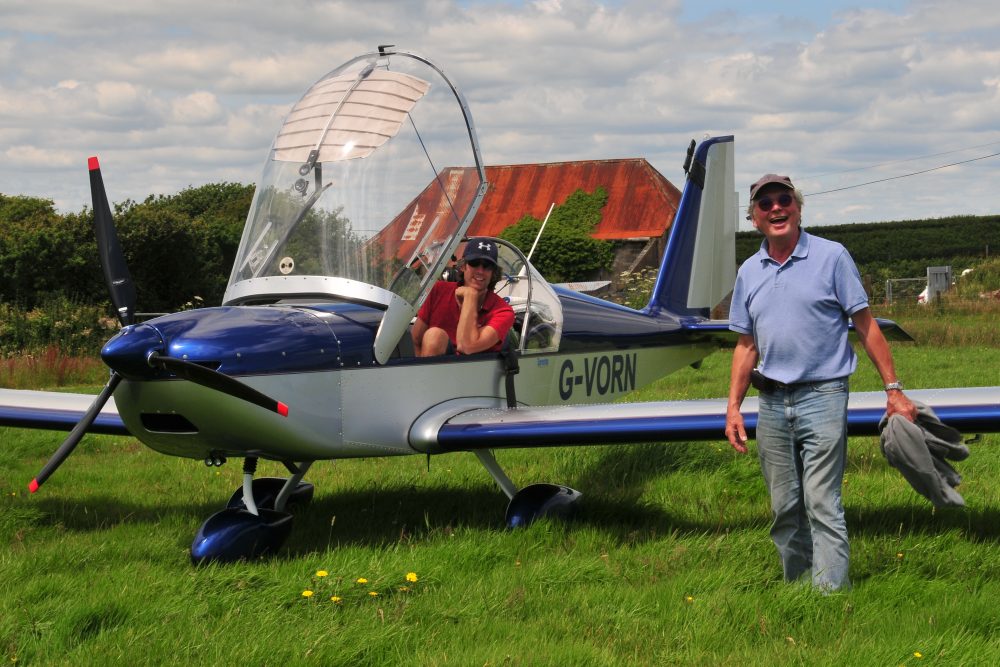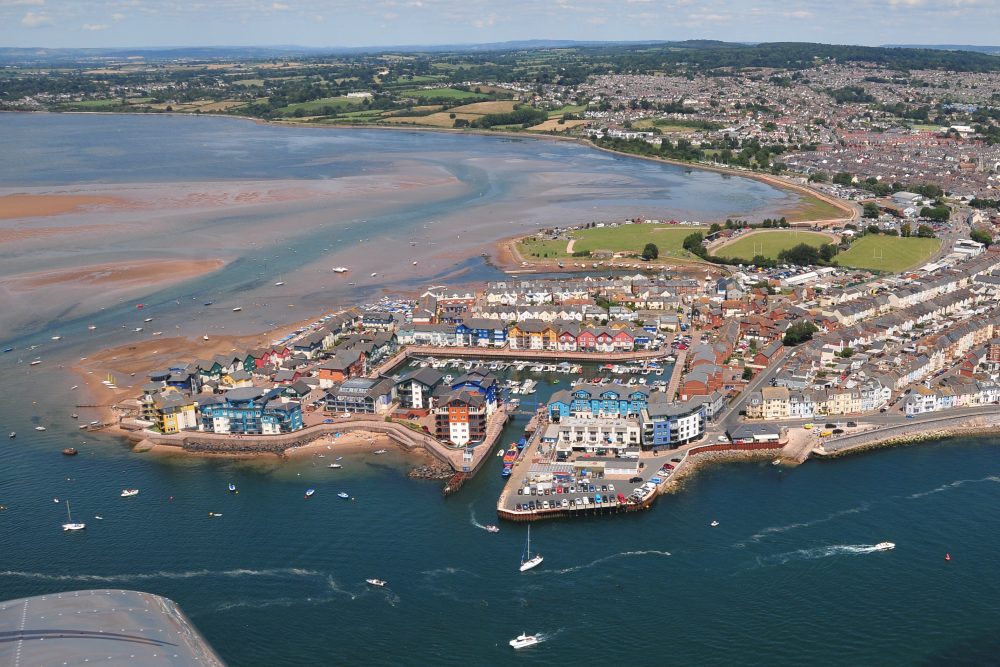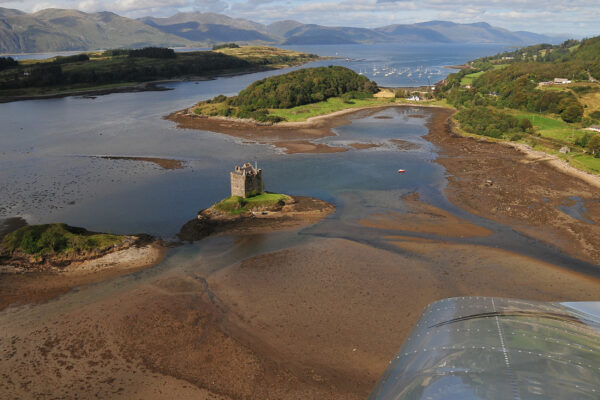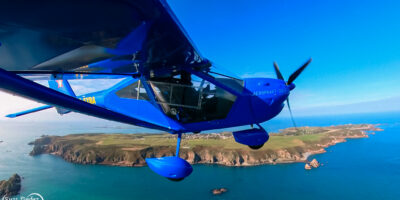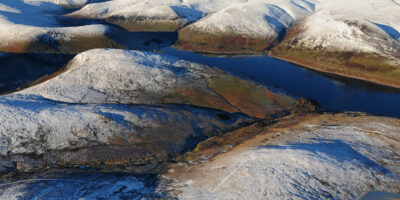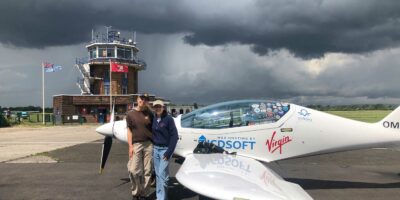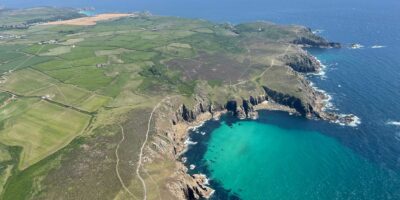Impressive structures
Approaching Teignmouth, the cliffs turned to striking rusty-red sandstone, which continued all the way to Exmouth with coastal erosion making some very impressive structures. Next stop on the grand tour was Farway Common, just nine miles east of Exeter Airport. We landed on R36 (there is also an E-W, both are 550m) and taxied to the hangar. The strip is operated by the irrepressible Terry Case who lives in the adjacent cottage and has provided a warm welcome to flyers for many years while hosting many successful fly-ins. Terry hasn’t been too well lately so I popped over to the house for a brief chat. He is another proud strip owner who has done so much for aviation in his part of the world and we wish him all the best for the future.
Our last stop in Devon was picturesque Watchford Farm in the Blackdown Hills, operated by Brian Anning. With calm winds we landed on the slightly undulating 550m R28 and were reunited with our pal Jon Crook who’d flown down to see us off the patch. It seemed an eternity since we’d said goodbye to Jon at Eggesford just 24 hours previously, but with the time now at 1500 we really had to push-on and quickly departed as four-ship for Compton Abbas.
It’s always a pleasure to visit popular Compton, and it was very well-organised and COVID-19 secure. The excellent café was open and Jon collected some cold drinks while we all took on UL-91 amid several vintage aircraft doing commercial rides. But all good things come to an end and it was finally time to say our goodbyes to our weary chums and head for home.
Alex and I enjoyed a relaxed flight home, making it back to Eshott exactly for the 1900 closing time after a truly wonderful weekend with brilliant flying friends.
In 14 hours of glorious flying, we’d visited 15 very different fields using exclusively grass runways.
We’d seen some amazing sights but most of all, had met incredibly generous and hospitable flying enthusiasts everywhere we went.
Flying in the UK really is fantastic – what an absolute tonic in a challenging year.




